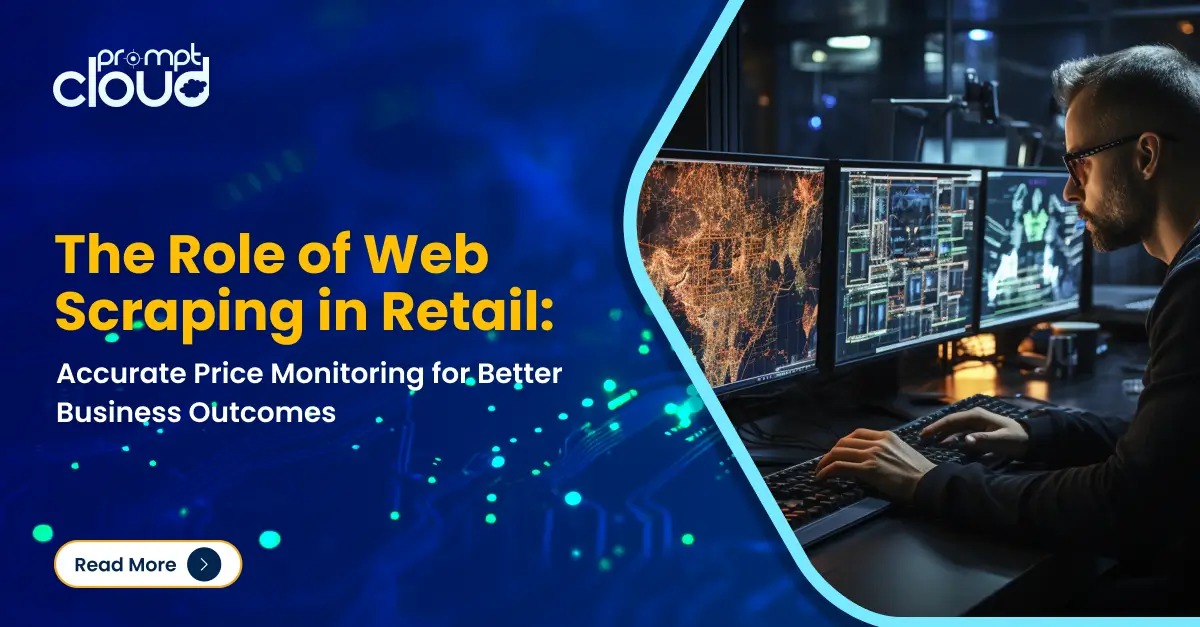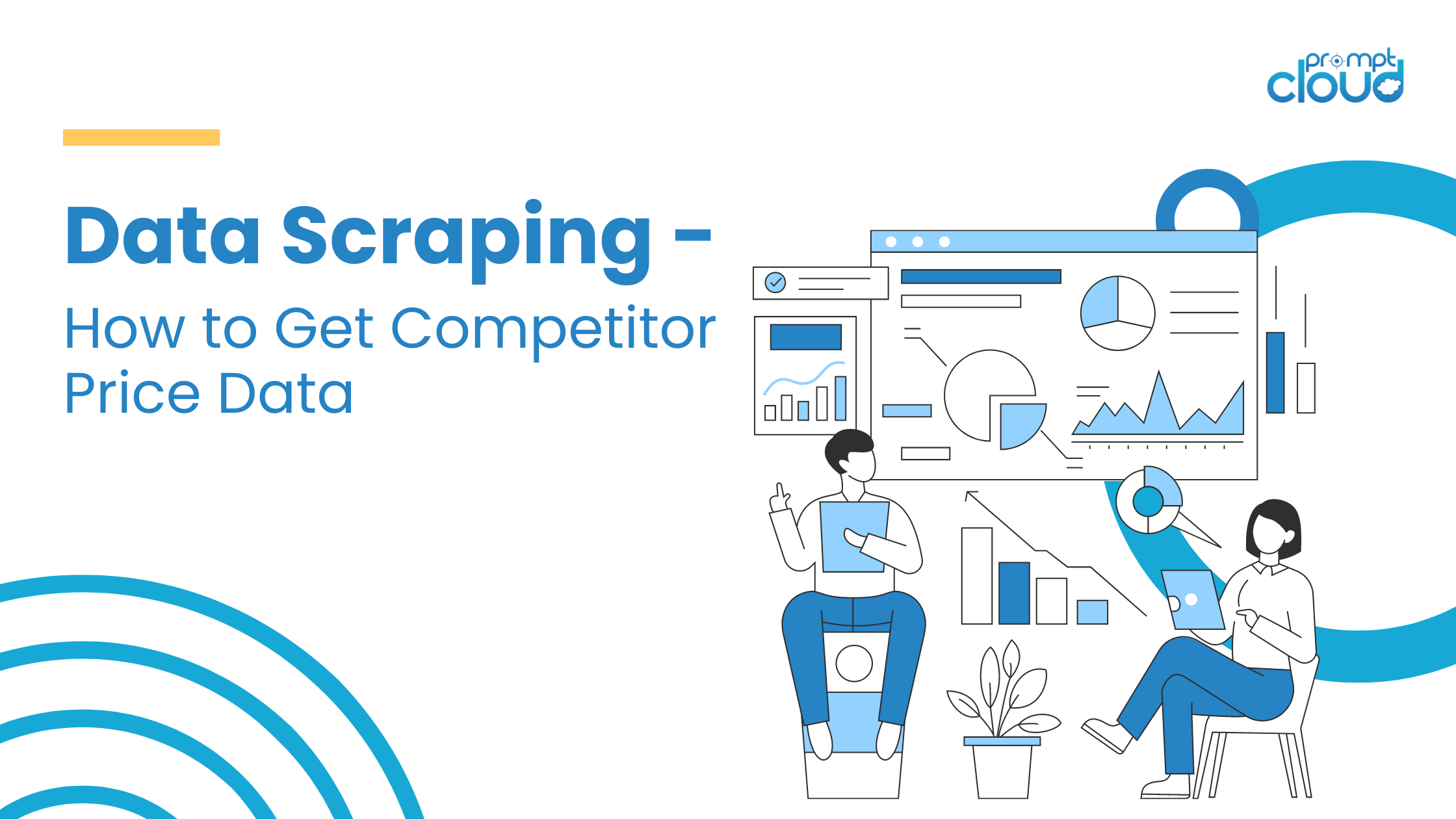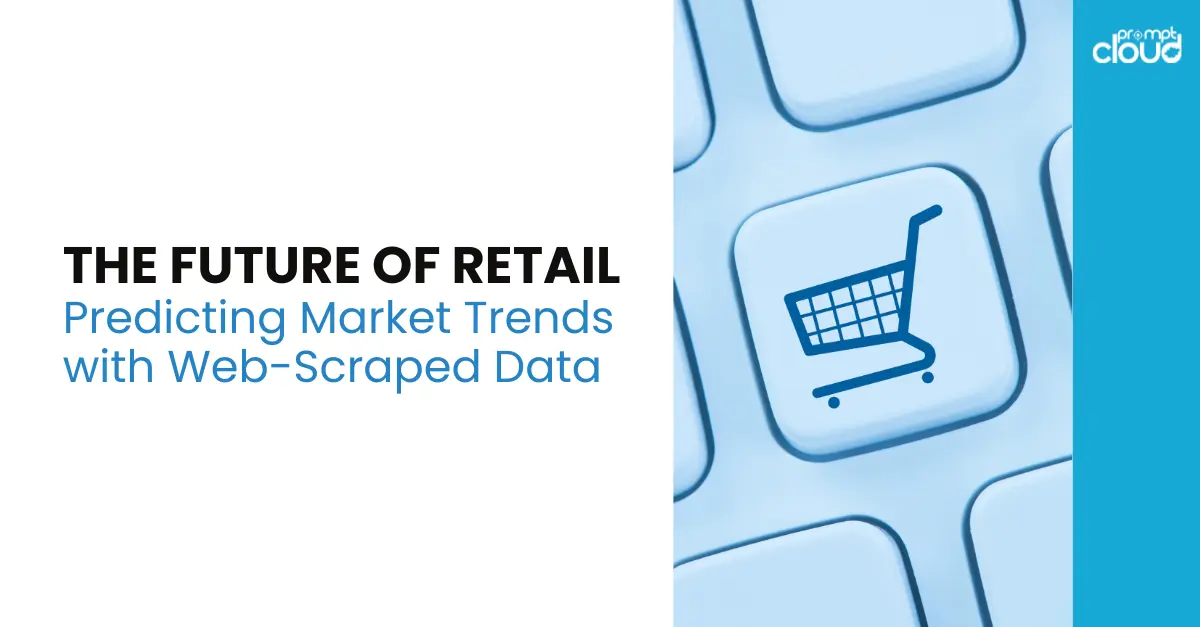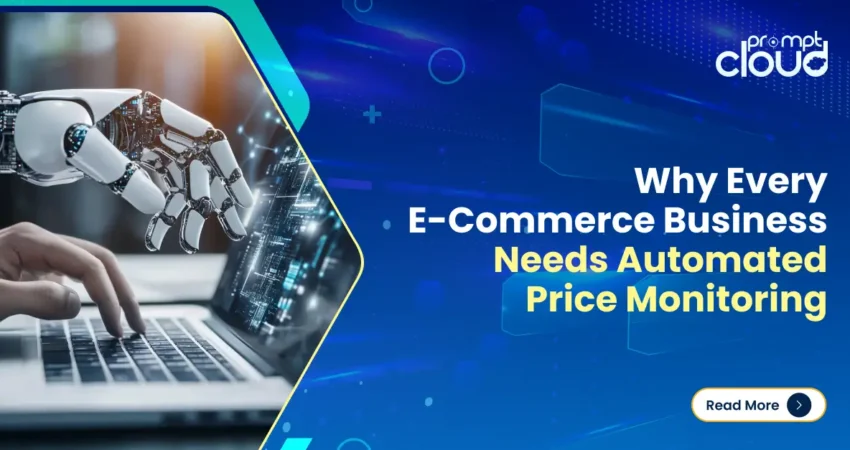
Consumers today are more informed than ever, thanks to price comparison tools, reviews, and various online resources that allow them to make educated purchasing decisions. For e-commerce businesses, this means that maintaining competitive pricing is key to securing sales. However, manually tracking competitor prices and adjusting your own pricing strategy is not only tedious but also prone to errors. This is where automated price monitoring comes in – a game-changing solution that streamlines the process and offers real-time insights.
In this article, we’ll delve into why every e-commerce business needs to incorporate automated price monitoring and how this powerful tool can optimize your pricing strategies.
Why is Price Monitoring Important in E-Commerce?
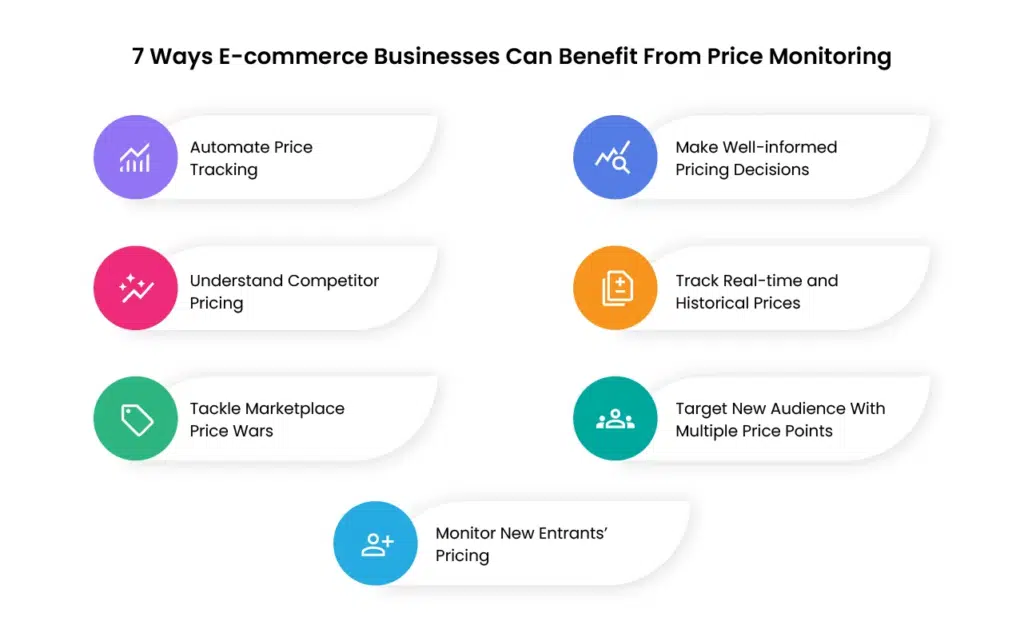
Image Source: Kanhasoft
Price is often the deciding factor for customers who are choosing between similar products. With the rise of e-commerce giants like Amazon and Walmart, smaller online retailers need to stay vigilant to ensure they aren’t being outpriced. Offering the right price at the right time is essential for any business that wants to stay relevant.
Price monitoring is the process of tracking product prices across various competitors and adjusting your own prices accordingly. While this can be done manually, the sheer scale of the modern e-commerce landscape makes it nearly impossible for businesses to keep up without automation.
What is Automated Price Monitoring?
Automated price monitoring takes the manual effort out of price tracking. Instead of dedicating hours to checking competitor websites and updating your pricing spreadsheet, an automated tool can continuously scan the web and provide real-time data on your competitors’ prices. This allows you to adjust your prices instantly, ensuring that you remain competitive without losing your profit margins.
What are the benefits of Automated Price Monitoring?
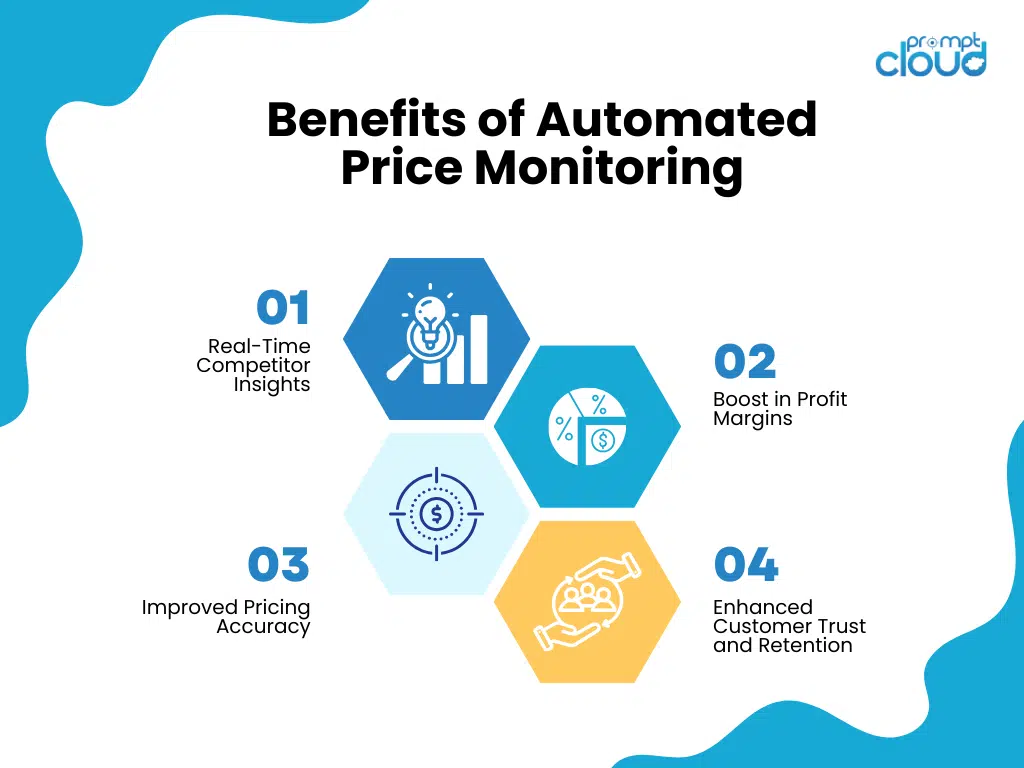
1. Real-Time Competitor Insights:
In today’s competitive marketplace, prices can fluctuate frequently. Manual tracking simply cannot keep up with the dynamic nature of pricing in the e-commerce world. Automated price monitoring tools provide real-time insights into how your competitors are pricing their products. This allows you to react swiftly to price changes and avoid losing customers to better-priced alternatives.
Competitor price monitoring tools can even alert you when a competitor lowers their price or introduces a discount, giving you the opportunity to match or beat that offer instantly. This level of agility is essential in keeping your brand competitive in the market.
2. Boost in Profit Margins:
One common misconception about competitive pricing is that it requires lowering prices, which can eat into profit margins. However, automated price monitoring tools provide a more nuanced strategy. Instead of simply offering the lowest price, you can identify opportunities to optimize pricing based on demand, competitor pricing, and even stock levels. This smart pricing strategy enables you to maintain healthy profit margins while still offering competitive prices.
3. Improved Pricing Accuracy:
Human error is inevitable when tracking prices manually. Missing a significant price drop from a competitor or incorrectly calculating a price adjustment could cost you valuable sales. Automated price monitoring eliminates the possibility of human error by using algorithms to provide accurate, real-time data.
Pricing accuracy is especially important when dealing with products that have varying demand based on seasonality, stock availability, or even customer behavior trends. An automated system can account for these variables and recommend pricing adjustments accordingly.
4. Enhanced Customer Trust and Retention:
Inconsistent pricing is a quick way to lose customer trust. Shoppers may feel frustrated if they see a lower price for a product after they’ve already purchased it at a higher rate. With automated price monitoring, your business can ensure pricing consistency, keeping customers satisfied and less likely to abandon their carts.
Automating retailer price monitoring also helps in adhering to minimum advertised price (MAP) policies, where you ensure your prices comply with the manufacturer’s pricing regulations. This is crucial for maintaining relationships with suppliers and avoiding penalties.
Why do Businesses Need Minimum Advertised Price Monitoring?
For many e-commerce businesses, adhering to a minimum advertised price (MAP) policy is crucial for maintaining relationships with suppliers. MAP policies are set by manufacturers to ensure that retailers do not advertise a product below a specified price, thus maintaining the brand’s perceived value.
However, minimum advertised price monitoring can be a challenge without the right tools. Manually checking that your pricing aligns with MAP requirements takes significant time and effort, and mistakes can lead to penalties from manufacturers. Automated price monitoring systems can help by automatically flagging any price violations, ensuring you stay compliant with MAP policies while optimizing your pricing for competitiveness.
How to Optimize Price Strategy using Competitor Insights?
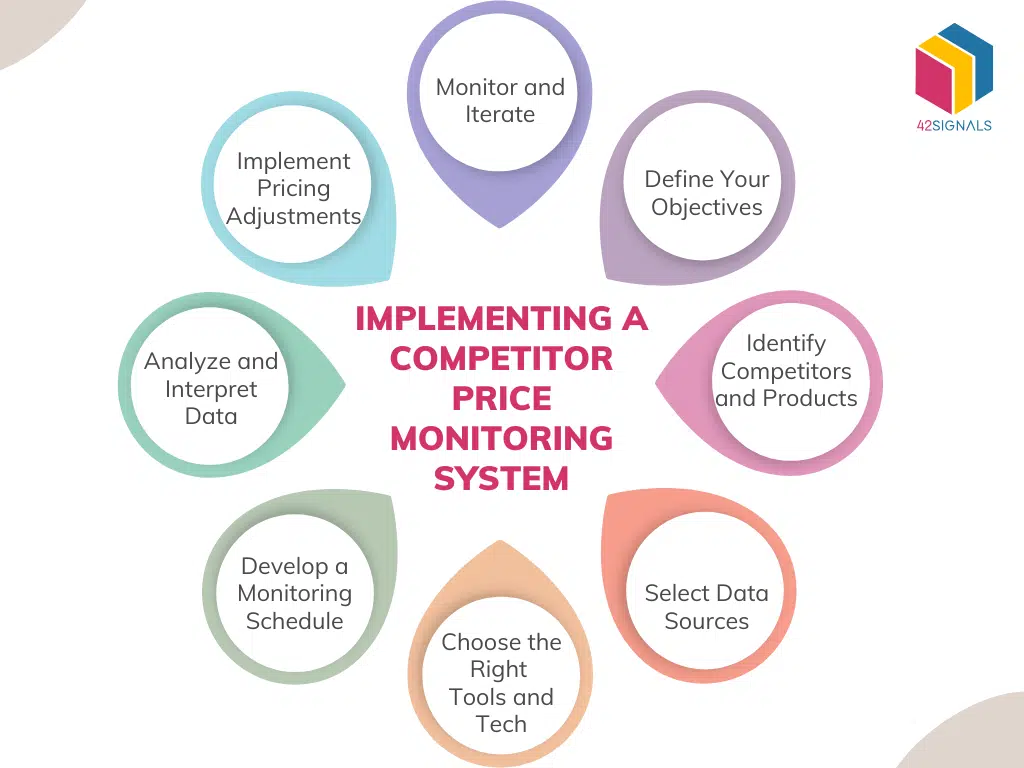
Image Source: 42Signals
Understanding your competitors’ pricing is essential for optimizing your own. Automated price monitoring tools not only track how your competitors are pricing their products but can also analyze their pricing patterns over time. This can help your business spot trends, such as seasonal price drops or peak pricing periods.
For instance, you may find that a competitor routinely lowers prices during certain sales events, giving you time to adjust your own strategy in advance. By using competitor price monitoring, you can stay one step ahead and maximize sales during high-traffic periods.
How Automated Price Monitoring Enhances Operational Efficiency?
Beyond the obvious benefits of competitive pricing, automated price monitoring also helps streamline operations by reducing manual labor. For e-commerce businesses that sell a large variety of products, tracking prices manually can take up an enormous amount of resources. An automated system not only saves time but also provides actionable insights that help your team make data-driven decisions more efficiently.
Consider how much time your business spends manually gathering pricing data from competitors. Now imagine reallocating that time toward strategic tasks like marketing, customer service, or product development. By automating retailer price monitoring, you free up resources while simultaneously improving your pricing strategy.
Staying Ahead with Dynamic Pricing
Another significant advantage of automated price monitoring is the ability to implement dynamic pricing. Dynamic pricing involves adjusting your prices based on real-time market demand, competitor prices, and other external factors. This strategy ensures that you are always offering the most competitive price without undercutting your profit margins.
For example, if a competitor’s product goes out of stock, your automated system can identify this and recommend raising your prices for a similar product, allowing you to capitalize on market demand. On the flip side, if your competitor lowers their prices, the system can recommend a corresponding reduction in your prices to stay competitive.
Choosing the Right Price Monitoring Solution
Not all price monitoring solutions are created equal, and selecting the right tool for your e-commerce business is crucial. You need a solution that is scalable, integrates seamlessly with your existing platforms, and offers detailed analytics.
At PromptCloud, we offer a robust price monitoring solution designed to meet the needs of e-commerce businesses of all sizes. Our tool allows you to track competitor prices, ensure MAP compliance, and implement dynamic pricing strategies. With real-time insights and automated alerts, our solution empowers your business to stay competitive in an ever-changing marketplace.
Conclusion:
As e-commerce continues to grow, so will the need for agile, automated pricing strategies. With so many competitors vying for customers’ attention, having real-time data at your fingertips can make the difference between a sale and a lost opportunity.
Investing in automated price monitoring is no longer optional for e-commerce businesses—it’s a necessity. By leveraging automated tools like PromptCloud’s price monitoring solution, you can ensure your pricing is always competitive, accurate, and in line with your business goals.
In the end, the right price monitoring strategy can help you increase profit margins, stay compliant with minimum advertised price monitoring, and offer your customers the best possible prices. This, in turn, builds trust, enhances customer satisfaction, and ultimately drives sales.Get started with PromptCloud today and transform the way your e-commerce business approaches pricing. Schedule a demo today!











